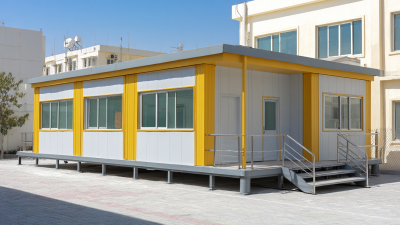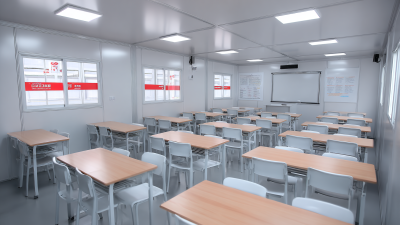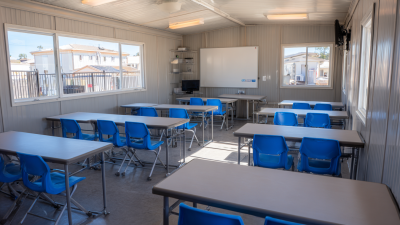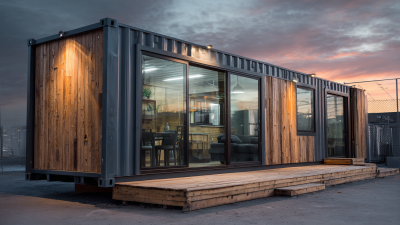The emergence of innovative Prefab Classrooms is revolutionizing the educational landscape, as highlighted at the 138th Canton Fair in 2025. According to the Global Modular Classroom Market Report, the prefab classroom sector is expected to witness a compound annual growth rate (CAGR) of 6.8% from 2023 to 2030, driven by the increasing demand for flexible and cost-efficient educational solutions. Amidst growing concerns regarding rapid urbanization and population growth, these modular structures offer a swift response to the urgent need for quality educational spaces, particularly in underserved areas.
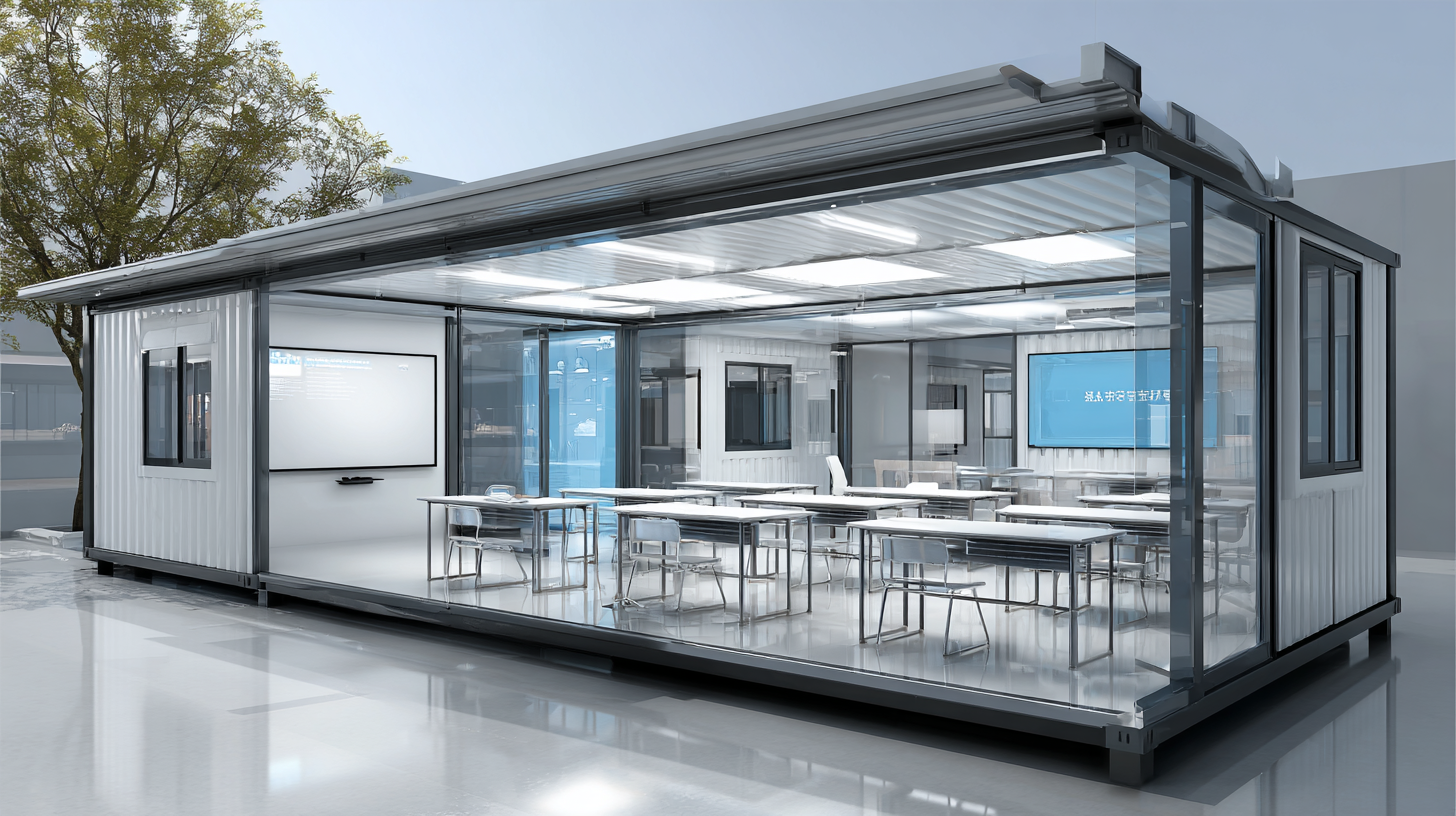
Furthermore, as sustainability becomes a central focus, prefab classrooms often incorporate eco-friendly materials and practices, aligning with the United Nations' Sustainable Development Goals. With the potential to enhance student engagement through innovative designs, the spotlight on Prefab Classrooms at the Canton Fair emphasizes their crucial role in shaping the future of education.
At the 138th Canton Fair 2025, the spotlight is on innovative prefab classrooms that are poised to revolutionize modern education. These classrooms, designed with versatility and sustainability in mind, offer educational institutions a solution to meet the increasing demand for learning spaces without compromising quality. Unlike traditional structures, prefab classrooms can be swiftly assembled and disassembled, allowing schools to adapt to changing needs and environments, ensuring that education remains uninterrupted.
The introduction of these prefab classrooms signifies a pivotal shift in educational infrastructure. Equipped with state-of-the-art technology and flexible layouts, they foster an interactive learning environment that encourages collaboration and creativity among students. Moreover, their eco-friendly construction methods contribute to reducing carbon footprints, aligning with global sustainability goals. The innovations showcased at the Canton Fair reflect a commitment to enhancing educational experiences while being mindful of the planet, making these prefab classrooms a game changer for modern education.
| Dimension | Data |
|---|---|
| Total Classrooms Displayed | 50 |
| Innovative Design Features | Modular, Eco-Friendly Materials, Smart Technology |
| Target Education Levels | Primary, Secondary, Tertiary |
| Sustainability Metrics | 70% Recycled Materials, Energy Efficient |
| Estimated Cost Savings | 30% Compared to Traditional Classrooms |
| Integration with Digital Learning | High-Speed Internet, Virtual Reality Tools |
| Feedback from Educators | Positive, Improved Student Engagement |
At the 138th Canton Fair 2025, innovative prefabricated classrooms highlighted their transformative impact on education, showcasing key advantages such as cost-effectiveness and flexible design. According to a report by Research and Markets, the global prefabricated construction market is expected to grow significantly, projected to reach $177.5 billion by 2025, reflecting a growing recognition of the benefits that prefab solutions offer. These classrooms not only minimize construction costs by up to 30% compared to traditional building methods but also reduce deployment time significantly, allowing educational institutions to respond swiftly to increased student enrollment.
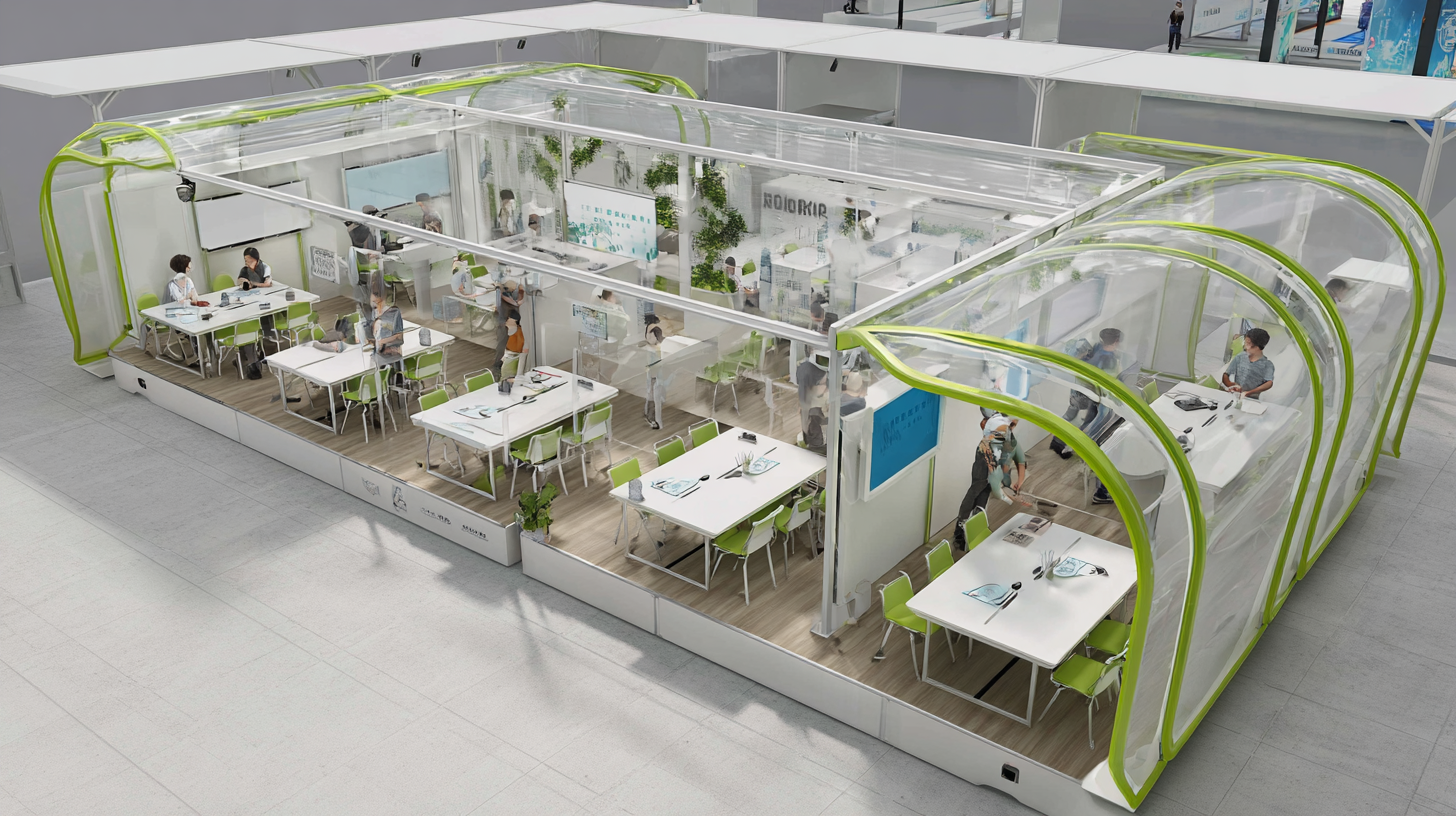
Moreover, the flexibility in design associated with prefabricated classrooms is revolutionizing how educational spaces are utilized. The Modular Building Institute indicates that modular construction can provide customizable and scalable options, accommodating varied class sizes and learning environments. With advancements in materials and technology, these structures can be tailored to meet specific educational needs, promoting collaborative and innovative teaching methodologies. This adaptability is crucial in today's dynamic educational landscape, where the focus is increasingly on creating engaging, multifunctional spaces that foster learning and growth.
Prefab classrooms are emerging as a transformative force in education, particularly in their contribution to sustainability. By utilizing advanced energy-efficient materials and innovative construction methodologies, these classrooms can reduce their carbon footprint by an impressive 40%. This significant decrease is achieved through the incorporation of eco-friendly building materials and smart design strategies that minimize energy consumption while maximizing comfort and usability for both students and educators.
Moreover, the focus on sustainable building practices extends beyond mere energy efficiency. Emerging trends in the development of materials aim to enhance performance and longevity, which can lead to lower maintenance costs and reduced environmental impact. Additionally, interventions that improve indoor air quality—such as advanced HVAC systems and air purifiers—are integral to the design of prefab classrooms, creating healthier learning environments. These innovations not only address the urgent need for sustainable solutions in education but also play a crucial role in setting a standard for future educational infrastructure developments.
The integration of smart technology in prefab classrooms is revolutionizing educational environments, making them more adaptable and conducive to learning. According to a report by MarketsandMarkets, the global smart classroom market is projected to reach $61.4 billion by 2023, showcasing a significant trend towards integrating advanced technology in educational settings. The use of IoT devices, interactive whiteboards, and automated learning platforms in prefab classrooms not only enhances student engagement but also facilitates personalized learning experiences that cater to individual learning styles.
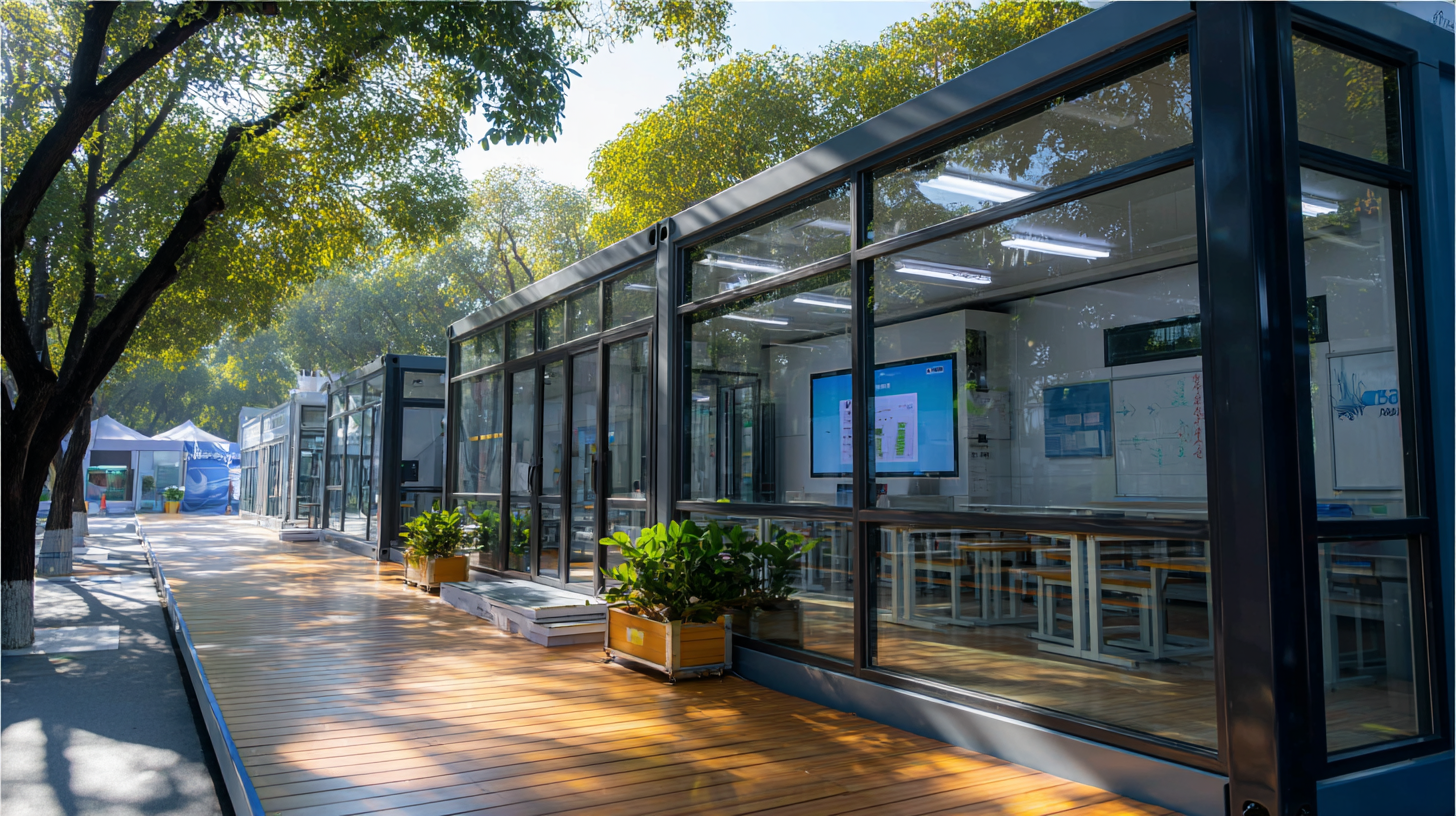
Further emphasizing the impact of technology in education, a survey conducted by EdTech Magazine found that 73% of educators believe that technology improves student learning outcomes. Prefab classrooms equipped with smart technology allow for the seamless integration of digital tools, enabling students to access a wealth of resources and collaborate in real-time. These classrooms are designed to be not just physical spaces but dynamic learning environments where technology and innovation meet to foster academic growth and creativity.
As seen at the 138th Canton Fair in 2025, the incorporation of smart technology is not merely a trend but an essential evolution in the way we approach education, preparing students for a tech-driven future.
At the 138th Canton Fair in 2025, innovative prefab classrooms are making waves in the educational sector across China. These modular classrooms not only provide a cost-effective solution to the growing demand for learning spaces but also come with a variety of design options that cater to different educational needs. Case studies reveal that schools successfully employing prefab modules have reported improved student engagement and adaptable learning environments, transforming traditional methods of instruction.
One exemplary case is the deployment of prefab classrooms in rural areas where infrastructure is often lacking. By using these mobile and sustainable units, schools can quickly set up operational facilities that are equipped with modern technology. This initiative has led to enhanced access to education for students in remote regions, showcasing the potential of prefab structures to bridge educational gaps in underserved communities.
**Tips for Implementation**: When considering the transition to prefab classrooms, it’s essential to conduct thorough needs assessments to ensure that the design aligns with the school's educational goals. Moreover, engaging the community and stakeholders in the planning process can foster support and make the transition smoother. Lastly, it's vital to ensure that these classrooms are well-integrated with existing resources and curricula to maximize their impact on student learning.
This chart illustrates the successful implementation of prefab classrooms in different educational sectors across China. The data represents the number of prefab classrooms deployed in various regions from 2020 to 2025.
